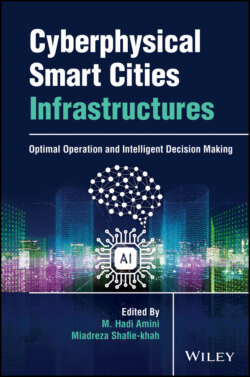Читать книгу Cyberphysical Smart Cities Infrastructures - Группа авторов - Страница 26
2.3.2.2 Machine Learning Process and Challenges
ОглавлениеThe learning process based on given input where data are not sufficient does not produce reliable and robust results [7]. Machine learning algorithms get stuck in local minimum or maximum easily due to a large amount of data that leads to a problem called overfitting [7]. Furthermore, machine learning algorithms fail to learn positions and states (classes) when the number occurrence in the data is far less than others. For instance, within the smart healthcare domain, when capturing data, the probability of having all desired classes looks low, and the number of rare diseases would be insufficient for learning.
Solutions: In a study [40], researchers established an approach called MetaSense, i.e. learn to sense rather than sense to learn. This approach took advantage of one of the important data analytic promises called zero‐shot learning (ZSL) [7, 41]. There are many applications of ZSL in computer vision [42] and motion detection in healthcare application [43] Furthermore, researchers in [44] proposed a solution based on ZSL called Zero‐virus providing a deep understanding for an intelligent transportation system to generate the best route for drivers. Zero‐virus does not need any vehicle‐tracklet annotation; thus it is the most volatile real‐world traffic scheme.
Machine Learning Statistic Records: Iskandaryan et al. [6] investigated a survey to study sensor data and analyze the impact of air quality in smart cities using supervised machine learning algorithms. They established four important and popular categories of algorithms associated with the number of research studies: first, the most popular ML algorithm, neural network (NN); second, logistic regression; third, ensemble algorithm; others. Furthermore, the results in [6] demonstrated that the number of publications associated with machine learning algorithms with the application of smart cities, particularly smart environment by predicting and preventing the air pollution risks, has increased progressively. Additionally, researchers in [6] evaluated the number of metrics that have been used in publications to examine the performance of each algorithm. The two most popular metrics are root mean square error (RMSE) and mean absolute error (MAE).
